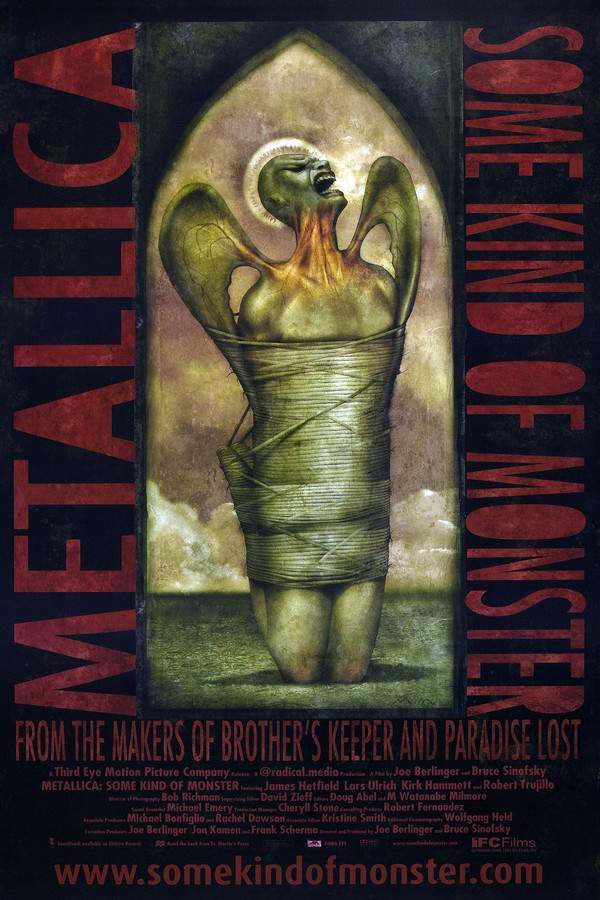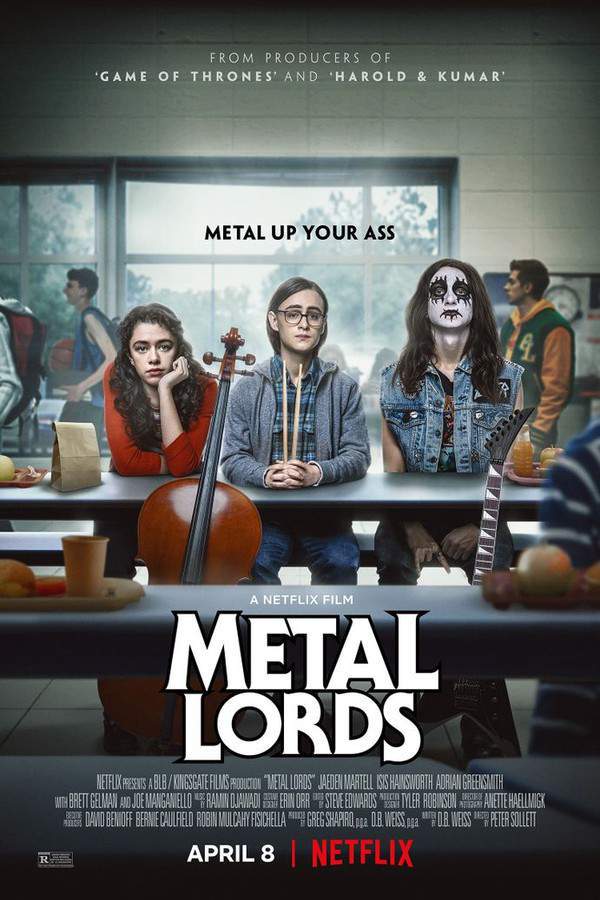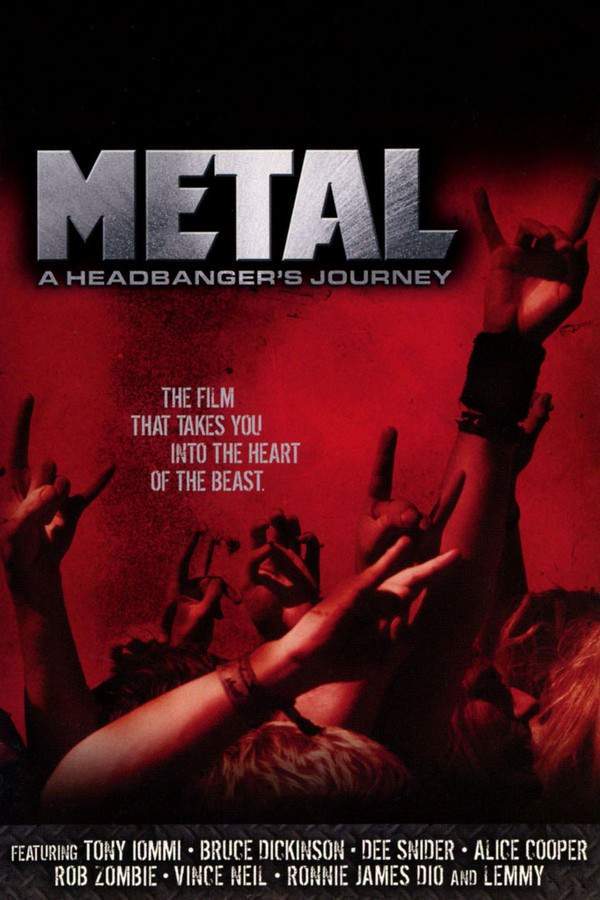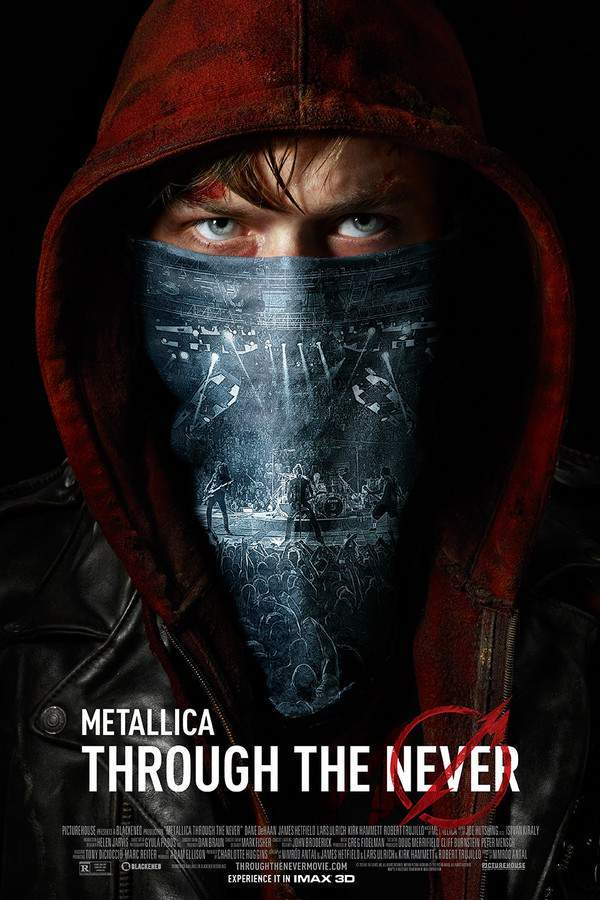Metallica: Some Kind of Monster 2004

Following the departure of bassist Jason Newsted, the iconic heavy metal band Metallica documented their efforts to navigate a period of intense turmoil and self-reflection. With the help of a therapist, the remaining members confront years of unresolved tensions and frustrations, revealing a vulnerable side as they attempt to rebuild their creative process and confront the challenges facing the group.
Does Metallica: Some Kind of Monster have end credit scenes?
No!
Metallica: Some Kind of Monster does not have end credit scenes. You can leave when the credits roll.
Meet the Full Cast and Actors of Metallica: Some Kind of Monster
Explore the complete cast of Metallica: Some Kind of Monster, including both lead and supporting actors. Learn who plays each character, discover their past roles and achievements, and find out what makes this ensemble cast stand out in the world of film and television.
External Links and Streaming Options
Discover where to watch Metallica: Some Kind of Monster online, including streaming platforms, rental options, and official sources. Compare reviews, ratings, and in-depth movie information across sites like IMDb, TMDb, Wikipedia or Rotten Tomatoes.
Ratings and Reviews for Metallica: Some Kind of Monster
See how Metallica: Some Kind of Monster is rated across major platforms like IMDb, Metacritic, and TMDb. Compare audience scores and critic reviews to understand where Metallica: Some Kind of Monster stands among top-rated movies in its genre.

74
Metascore
7.2
User Score


88%
TOMATOMETER

83%
User Score

7.5 /10
IMDb Rating

70
%
User Score
Take the Ultimate Metallica: Some Kind of Monster Movie Quiz
Challenge your knowledge of Metallica: Some Kind of Monster with this fun and interactive movie quiz. Test yourself on key plot points, iconic characters, hidden details, and memorable moments to see how well you really know the film.
Metallica: Some Kind of Monster Quiz: Test your knowledge about the documentary 'Metallica: Some Kind of Monster' and the struggles faced by the band during its production.
What significant event had affected Metallica before the spring of 2001?
The lawsuit against Napster
The death of Cliff Burton
The release of their previous album
The recording of Black Album
Show hint
Awards & Nominations for Metallica: Some Kind of Monster
Discover all the awards and nominations received by Metallica: Some Kind of Monster, from Oscars to film festival honors. Learn how Metallica: Some Kind of Monster and its cast and crew have been recognized by critics and the industry alike.
10th Critics' Choice Awards 2005
Best Documentary Feature
20th Film Independent Spirit Awards 2005
Best Documentary
Full Plot Summary and Ending Explained for Metallica: Some Kind of Monster
Read the complete plot summary of Metallica: Some Kind of Monster, including all major events, twists, and the full ending explained in detail. Explore key characters, themes, hidden meanings, and everything you need to understand the story from beginning to end.
In the spring of 2001, Metallica finds itself navigating through a tumultuous phase. Following their lawsuit against Napster, a wave of discontent among fans has arisen, and the departure of bassist Jason Newsted has created a significant rift within the band. To mend the growing tensions, they bring in performance coach Phil Towle, although Newsted isn’t convinced, dismissing the effort as “really fucking lame and weak.” Amid this chaos, the band sets out to create a new studio album in an abandoned barracks at the Presidio of San Francisco. They collaborate with veteran producer Bob Rock, who fills in as bassist and works alongside main members, James Hetfield (singer/guitarist), Lars Ulrich (drummer), and Kirk Hammett (guitarist). This new approach leads to the creation of tracks like “Some Kind of Monster” and “My World” showcasing a more unified effort.
However, just as the album begins to take form, Hetfield’s exit from the sessions initiates a wave of uncertainty. His decision to enter drug rehabilitation to tackle his addiction puts the project on an unexpected hold. Ulrich seeks feedback from his father on the material they’ve produced, only to receive harsh criticism that the songs are mediocre. As months pass without Hetfield, doubts loom over Metallica’s future. While Ulrich, Rock, and Hammett continue their therapeutic sessions with Towle, Hammett retreats to his northern California ranch, clinging to the hope of resolution.
In a notable moment, Ulrich reconnects with Metallica’s original lead guitarist, Dave Mustaine, who was dismissed in 1983. Mustaine’s confrontation reveals deep resentment towards Metallica and the shadows he feels they cast over his own career. A visit to an Echobrain concert leads Ulrich to lament his struggle to maintain his own band. As Hetfield’s absence extends over six months, Metallica reluctantly lets go of their lease at the Presidio, leaving the band’s album and future clouded in uncertainty.
Emerging from rehab in April 2002, Hetfield rejoins the band at their new HQ studio to start crafting the poignant track “Frantic.” His recovery strategy mandates a stringent four-hour workday and establishes a rule that his bandmates cannot discuss recorded material without his presence. These strict boundaries create tension, particularly with Ulrich, who feels Hetfield has become excessively controlling. This culminates in a charged meeting, during which Ulrich expresses his frustrations, putting strain on the foundational ties of the band as they work on “The Unnamed Feeling.” Hetfield’s control stems from a deeply rooted fear of abandonment tied to his past experiences.
Amidst the rising tensions, Hammett provides a steady counterbalance to the band’s conflicts, surprised by their choice to omit guitar solos from their work. The frustration intensifies as the band grapples with their management’s push for a promotional video for a radio contest, a sentiment that ultimately fuels the creation of the track “Sweet Amber.” As their creative output begins to soar, Ulrich channels his frustrations regarding the Napster lawsuit into the lyrics for “Shoot Me Again.” As they decide which tracks to finalize, the members sense a revival in their chemistry and reconsider Towle’s influence, feeling he has integrated too closely into their dynamic.
The band is invited to perform at the upcoming MTV Icon tribute show, prompting an urgent search for a new bassist. After considering various talented musicians, they choose Robert Trujillo, whose exceptional skills and finger-style technique remind them of their late bassist, Cliff Burton, who tragically died in 1986. They decide to name their album St. Anger and film a music video for the title track at San Quentin State Prison. As they prepare for a three-year break from touring, Ulrich confidently asserts that they’ve “proven that you can make aggressive music without negative energy.” The film concludes with an exhilarating montage of Metallica performing “Frantic” to electrified crowds during their summer 2003 tours, citing that St. Anger debuted at number one in 30 countries globally.
Uncover the Details: Timeline, Characters, Themes, and Beyond!

Coming soon on iOS and Android
The Plot Explained Mobile App
From blockbusters to hidden gems — dive into movie stories anytime, anywhere. Save your favorites, discover plots faster, and never miss a twist again.
Sign up to be the first to know when we launch. Your email stays private — always.
Watch Trailers, Clips & Behind-the-Scenes for Metallica: Some Kind of Monster
Watch official trailers, exclusive clips, cast interviews, and behind-the-scenes footage from Metallica: Some Kind of Monster. Dive deeper into the making of the film, its standout moments, and key production insights.
Metallica: Some Kind of Monster Themes and Keywords
Discover the central themes, ideas, and keywords that define the movie’s story, tone, and message. Analyze the film’s deeper meanings, genre influences, and recurring concepts.
Metallica: Some Kind of Monster Other Names and Titles
Explore the various alternative titles, translations, and other names used for Metallica: Some Kind of Monster across different regions and languages. Understand how the film is marketed and recognized worldwide.
Similar Movies To Metallica: Some Kind of Monster You Should Know About
Browse a curated list of movies similar in genre, tone, characters, or story structure. Discover new titles like the one you're watching, perfect for fans of related plots, vibes, or cinematic styles.
Quick Links: Summary, Cast, Ratings, More

What's After the Movie?
Not sure whether to stay after the credits? Find out!
Explore Our Movie Platform
New Movie Releases (2025)
Famous Movie Actors
Top Film Production Studios
Movie Plot Summaries & Endings
Major Movie Awards & Winners
Best Concert Films & Music Documentaries
Movie Collections and Curated Lists
© 2025 What's After the Movie. All rights reserved.


































